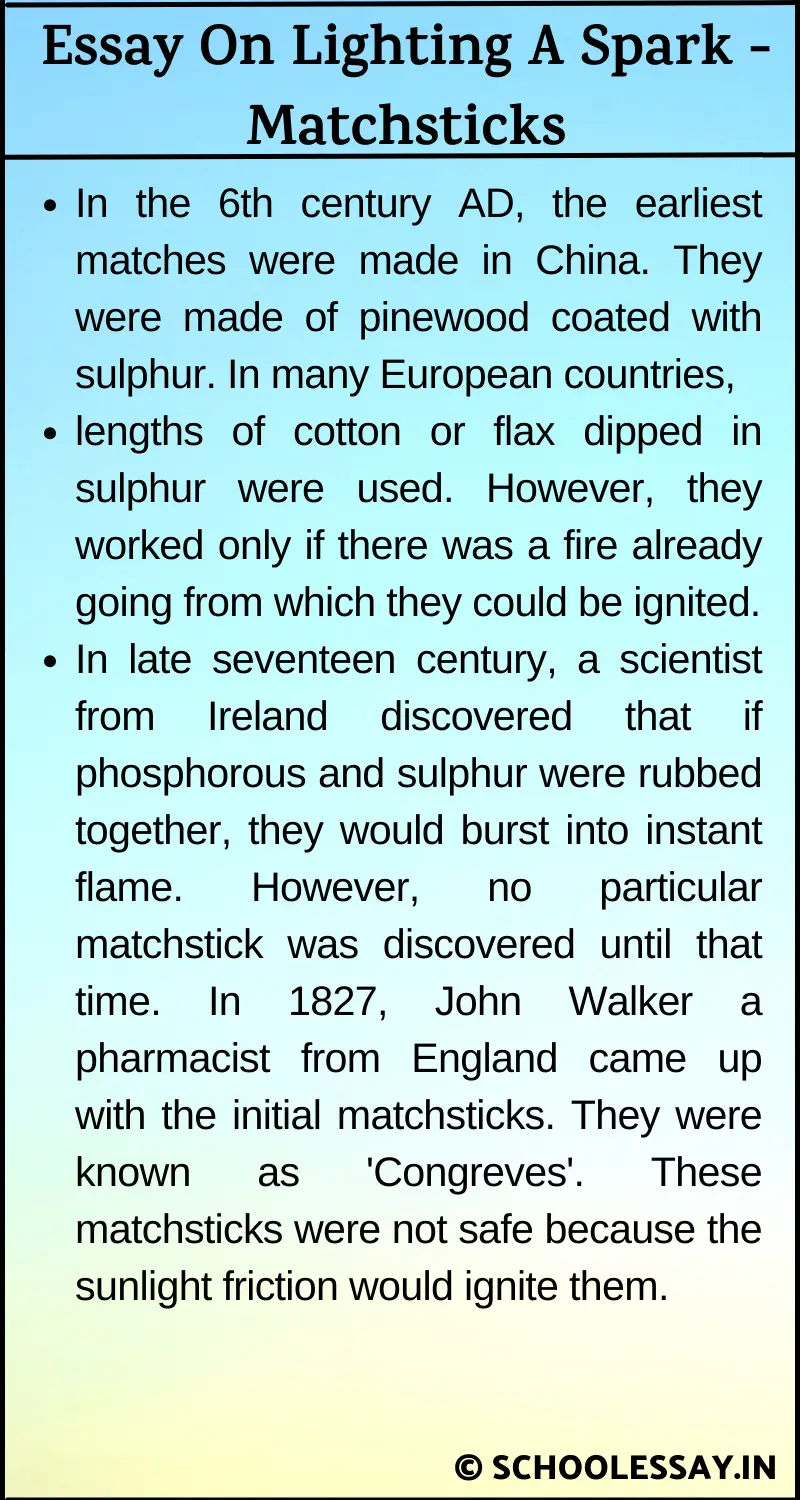Essay On Lighting A Spark – Matchsticks
In the 6th century AD, the earliest matches were made in China. They were made of pinewood coated with sulphur. In many European countries, lengths of cotton or flax dipped in sulphur were used. However, they worked only if there was a fire already going from which they could be ignited.
In late seventeen century, a scientist from Ireland discovered that if phosphorous and sulphur were rubbed together, they would burst into instant flame. However, no particular matchstick was discovered until that time. In 1827, John Walker a pharmacist from England came up with the initial matchsticks. They were known as ‘Congreves’. These matchsticks were not safe because the sunlight friction would ignite them.
A French man named Charles Suria hit upon a much better ‘strike-anywhere’matches using white phosphorous. He called his matches as the lightbearer’. These matches became very popular and remained in use until the end of the nineteenth century.
The fumes given off by the light-bearer’ were poisonous. They caused a deadly bone disease called phossy jaw’. Workers in these match factories, especially women died due to horrible pain as their faces were wracked and ruined. Moreover, the girls who sold the boxes went bald since they carried them on their heads. In the early twentieth century, white phosphorous was replaced by phosphorous sesquisulphide, which was the safer option.
Modern safety matches were invented by a Swedish manufacture, Johann Lundstorm in 1855. The striking surface was a strip coated with non-poisonous red phosphorous mixed with sand or powdered glass. The match head contained potassium chlorate and other chemicals like sulphur.
Sweden is the biggest manufacturer of matches and has the world’s only Match Museum where most of the factories are locked. However, there are two main types of matches. They are safety matches, which can be struck only against a specially prepared surface and strike-anywhere matches, for which any suitably frictional surface can be used. Some match-like compositions, recognized as electric matches, are ignited electrically. They do not make use of heat from friction. Their average burn time is 26.75 seconds.
Modern and highly automatic matchmaking machines turn out about 800 matchboxes in a minute. About 500 billion matchsticks are used every year around the globe. In India, Sivakasi in Tamil Nadu produces 80% of the country’s matches.

ALSO READ:
- Essay On International Women’s Day
- Essay On Is Science A Blessing Or A Curse
- Essay On Jack Of All Trades Master Of None
- Essay On Juvenile Delinquency
- Essay On Karnataka – The City Of Gardens
- Essay On King Harshavardhan Of Vardhana Dynasty
- Essay On Laser And Its Uses In Industry And Medicine
- Essay On League Of Nations – Aims And Reasons For Failure
- Essay On Leisure
- Essay On Libraries And Their Classification

